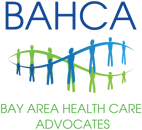I
For a moment, I would like you to imagine yourself in the following situation.
You are in the exam room for your diabetic check-up, expecting to see a familiar face. But instead of your primary care physician, a stranger walks in. This individual is not a physician but is a nurse practitioner (NP). Do you know the difference between the two?
You are in the ER with chest pain. You are expecting to be met by a board certified emergency medicine physician. Instead, you notice the individual's name badge reads "Doctor of Nursing Practice." Do you know the difference between the two?
Let me explain the difference:
Nurse Practitioner
Education in California: 5 to 8 years
- 3 - 4 years undergraduate degree in nursing, must complete RN.
- 2 -4 years graduate degree in nursing (2 years results in Masters of Nursing, an additional 2 years results in Doctorate of Nursing, these may be completed online or in person).
- Pass the National Nurse Practitioner Certification exam.
Total Required Clinical Training: 500 – 720 hours.
Physicians
Education: 11 – 18 years
- 4 years undergraduate degree.
- 4 years medical school.
- Minimum of 3 – 7 years residency in specialized field during which time the newly graduated physician works under the supervision of an attending physician for their entire residency program.
- 1 – 3 years fellowship (optional)
- Pass three national certification exams in order to receive state license.
- Pass national board certification exam in specialty area in order to be "board certified" in that specialty.
Clinical Training: 10,000 – 16,000 hours of clinical training.
When Being Seen by an NP
The quality of people in every profession ranges from mediocre to stellar. Medicine is no different. I have worked with exceptional physicians and nurse practitioners. I’ve also received and witnessed instances of substandard care by NPs, including instances in which the NP refused to consult with their supervising physician. Significant errors by NPs included incorrect diagnoses, incorrect prescriptions, unnecessary lab tests, and serious errors in care that led to substantial harm.
Until last month, California nurse practitioners were required to work under a physician's supervision. On September 29, 2020, Governor Newsom signed AB 890 which gives NPs the right to work independently without physician supervision. This change will impact your health care.
Here are questions and recommendations to use when you’re seen by an NP:
“What are your credentials?”
Often times, patients are seen by a non-physician provider who introduces themself as “Dr. X” because they have a doctorate of nursing. However, this is not appropriate in the clinical setting as it leads most patients to think they are a physician. Other members of the care team may also have a doctorate (pharmacist, physical therapist) but they do not call themselves "doctor" in a clinical setting. When you ask for credentials, you are asking to know what license that individual holds. For example, are they are registered nurse, a nurse practitioner, or a physician? Each individual is an important part of the team and the training they've received matters.
"Is there a physician at this facility, or one who can be easily reached?"
Even though AB 890 allows NPs to work without physician supervision, ideally collaboration between NPs and physicians should still occur. As you saw above, physician licensure requires far more education and training than that of an NP. In addition, hands-on clinical experience is paramount when providing care. You deserve the experience, education, and expertise of physicians.
"How often do you consult with physicians?"
This question will provide you with an understanding of how closely they work together. It will also tell you how likely the nurse practitioner is to recognize their limitations. The eyes can't see what the brain doesn't know, so false certainty can result in unnecessary complications or, at worst, death.
Your first visit at a new clinic should always include evaluation by a physician.
An NP might do the initial exam, but you should also been seen by the supervising physician. With California’s new law, it is possible a physician will not see you at all.
An initial specialty consultation with a specialty clinic should be with a physician.
A major complaint I hear from primary care physicians is that their specialty referrals are seen by an NP only. You've already seen a physician with years of training who has decided they need a specialist's input. Why would you then be seen by someone with less expertise?
If you have a new diagnosis or a new concern, consider asking that you be seen by a physician.
It is your right to see a physician for your care. If you are seeing an NP and you're not confident in their evaluation or diagnosis, ask them to run your case by a physician while you wait.
Urgent Care or ER
Call ahead to see if a physician is on site. Strongly consider an alternate location if one is not available. If addressing a serious emergency, request that the physician see you.
If your physician didn't see you for the last visit, ask that you be seen by her at the following visit.
At the end of the day, your clinicians and I, as a patient advocate, want you to get the best quality of care. Know your medical team. Make sure you understand their unique roles in delivering your care. Don’t settle for anyone, be they an NP or physician, who is not meeting your needs.
**For more information and to report concerns, see Physicians for Patient Protection.



.gif?width=200&name=NAHAC-Member-Badge200x112+(1).gif)


